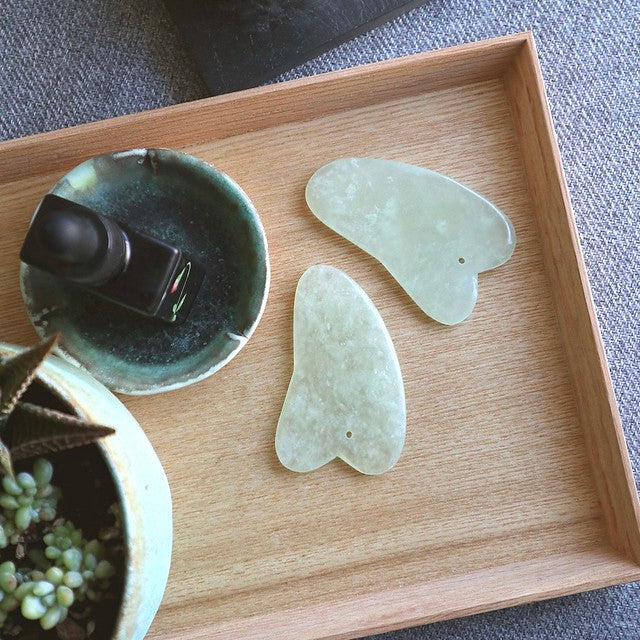
Wellness in a Stone: A Brief Guide to the Gua Sha
Whether you're stressed, a bit under the weather, or just need a pick-me-up, a few scrapes of a gua sha may help you feel better. But what exactly is it, how does it work, and how do you use it? Let's find out.
Gua sha
The term gua sha (刮痧) translates from Chinese as "scrape away illness." The practice comes from traditional Chinese medicine (TCM), which uses techniques like acupuncture and tai chi as well as herbal-based remedies to help treat ailments. In TCM, a gua sha is rubbed or scraped across the face and body with the idea of improving circulation and pushing out toxins.
Aventurine
Gua sha may be made of a number of materials, including jade and obsidian. The ones we carry are made of green aventurine, a kind of quartz. Some believe aventurine has healing properties such as stimulating the metabolism and reducing stress. Regardless it's lovely to look at and smooth to the touch.
Acupressure
The gua sha is sometimes used in acupressure, a TCM practice that's similar to acupuncture. Whereas acupuncture uses thin needles to pinpoint areas in the body to relieve pain, promote relaxation, and treat certain health conditions, acupressure employs the practitioner's hands or a tool like a gua sha.
Effleurage
This massage technique involves long or circular strokes. They can be made with the hand or, you guessed it, a gua sha.
How to use it
Like the jade roller, the gua sha can be used on the face to reduce puffiness and increase circulation. However, it's also believed to release toxins and stress, and is sometimes used on other parts of the body, like the neck, back, arms, or legs. Check out this video for how-tos and tips.
Want even more wellness? Visit our whole collection.